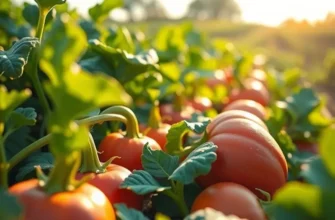Low-histamine eating is gaining attention for its potential health benefits for those sensitive to histamines. Many individuals are exploring how dietary choices can impact their well-being. This guide provides a clear and balanced overview of low-histamine eating, helping you discern its principles, benefits, and practical suggestions.
Understanding Histamines: What You Need to Know

Histamines are fascinating yet complex molecules integral to the human body’s immune response. They act as signaling compounds, orchestrating various physiological functions like gastric acid secretion, neuromodulation, and inflammation. While histamine plays a crucial role in battling allergens and infections, overexposure or an inability to break it down can cause adverse reactions.
The human body produces histamine naturally. However, it is also ingested through certain foods. High-histamine foods can trigger uncomfortable symptoms such as headaches, rashes, digestive issues, and in severe cases, anaphylaxis. People with histamine intolerance—often due to a deficiency in diamine oxidase (DAO), the enzyme responsible for breaking down histamine—experience such symptoms more acutely.
Histamine intolerance is an emerging consideration in dietary planning, particularly within specialized eating frameworks. Who might benefit from a low-histamine diet? It is particularly beneficial for individuals experiencing unexplained symptoms that align with histamine overload. This condition can mimic allergic reactions without involving the immune system in classic allergen testing.
Understanding the sources of histamines in food is vital for successful management. High-histamine foods include aged cheeses, fermented products, smoked meats, and alcohol. Additionally, certain foods can stimulate the body’s release of histamines or block DAO activity, exacerbating the problem. This dietary approach requires careful management and might call for substitutions of commonly consumed ingredients. Exploring dishes from global cuisine, which often don’t feature high-histamine ingredients, can offer delightful alternatives.
Histamine-related reactions vary among individuals. Some may experience symptoms shortly after consumption, while others suffer chronic issues due to cumulative exposure. Therefore, those considering a low-histamine diet should monitor their symptoms closely to identify potential food triggers.
To navigate this dietary path, it often helps to keep a food journal, noting down meals and any subsequent reactions. This practice assists in pinpointing personal triggers and adjusting food choices accordingly. Consulting with healthcare professionals like dietitians or nutritionists can also support a balanced dietary transition.
In essence, a low-histamine diet isn’t just about restriction but adaptation and mindfulness. By being aware of histamine’s diverse roles and respecting individual tolerances, one can make informed dietary choices leading to improved health and well-being.
Practical Tips for Embracing Low-Histamine Eating

Implementing a low-histamine diet doesn’t mean sacrificing taste or nourishment. With careful planning and smart choices, you can still enjoy a variety of delicious meals while reducing histamine intake. Below are some practical tips to guide you through grocery shopping, meal planning, and cooking.
Start by recognizing the foods generally considered low in histamine. Fresh meats and fish, most vegetables, rice, and egg-based dishes are some examples. Be sure to buy fresh products and avoid aged or fermented varieties, as histamine levels can increase during storage and fermentation.
When grocery shopping, focus on purchasing fresh, unprocessed ingredients. Avoid canned, cured, or smoked options. Instead, opt for freshly butchered meats and fish. For vegetables, choose fresh produce over canned or pickled options. Consider shopping frequently in smaller quantities to ensure maximum freshness.
Meal planning is essential in a low-histamine diet. Create a weekly menu focused on quick-freeze techniques to preserve foods like meats and fish, which are prone to histamine build-up over time. Explore recipes that incorporate steaming or baking, which tend to maintain nutritional value without adding histamine. A variety of low-histamine recipe options can keep your meals interesting and satisfy your nutritional needs.
Cooking from scratch is crucial, as even store-bought marinades can contain high histamine levels. Experiment with fresh herbs and spices instead of processed seasonings. Citrus fruits, while generally high in histamines, possess zest that can be used in minimal quantities for flavoring if tolerated.
When it comes to storage, knowledge is power. Store perishable items promptly in the fridge and consume them quickly. Freezing is an excellent option for fish and meat to slow down the formation of histamines. Avoid leftovers if possible, as histamines can increase over time. Utilize knowledge from resources like safe kitchen storage to guide proper food preservation techniques.
Additionally, be aware of substitutions that can make life easier. Vinegars are often high in histamines, but lemon juice or grape must can serve as viable low-histamine alternatives for salad dressings or marinades.
Finally, learning how histamine levels change during food storage and preparation can greatly enhance your adherence to this eating plan. By understanding which factors contribute to histamine formation, you can better manage your diet and potentially alleviate some of the symptoms associated with histamine intolerance.
This active approach to low-histamine eating empowers you to take control of your health while still enjoying a diverse and exciting array of meals. Given the wide availability of low-histamine foods and the potential for creative meal prep solutions, there’s no shortage of options for maintaining a balanced and fulfilling diet.
Final words
In summary, low-histamine eating presents a unique approach to diet, focusing on the careful selection of foods to promote health and well-being. By understanding the nature of histamines and implementing practical strategies, individuals can enhance their quality of life. Whether you’re seeking to reduce allergens, improve digestion, or simply explore new dietary avenues, embracing a low-histamine lifestyle may provide a pathway to better health. It’s always advisable to consult with a healthcare professional when making significant dietary changes to ensure the best outcomes for your specific needs.








